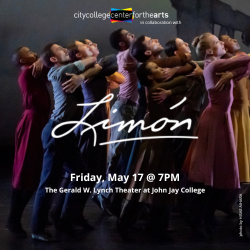Testimony on a Comprehensive Cultural Plan for NYC
Tuesday, November 19, 2013
Testimony on a Comprehensive Cultural Plan for NYC
Submitted to the New York City Council Committee on Cultural Affairs, Libraries, and International Intergroup Relations
By Lane Harwell, Executive Director of Dance/NYC
On behalf of the service entity Dance/NYC and more than 1,200+ local dance makers and companies, I advocate for the centrality of dance to any cultural planning for the City of New York, which has earned its reputation as a global dance capital. American ballet, modern dance, tap, and hip-hop, among other forms, have their roots here; there is more dance activity here than anywhere else; and dance is an economic engine for the people of New York (Recent State of NYC Dance 2013 findings indicate a sample of 501(c)(3) dance organizations expend $251M in total annually). At the same time, I offer that all of us in arts and culture are stronger when we are working together and with all New Yorkers.
For a cultural plan to be comprehensive, it would take as its starting point arts and culture as a whole and consider the evolving roles of all allied disciplines and forms. Certainly, it would consider the 501(c)(3) organizations—in all City Council districts, and of varying shapes and sizes—currently eligible for funding by the Department of Cultural Affairs (DCA). But it would also embrace those contributing to arts and culture outside this legal structure, including individual artists. It would acknowledge that creative lives exist on a continuum and take seriously arts education, arts careers, institutional advancement, and, concomitantly, audience and constituent access and engagement.
Such a plan would NOT look at arts and culture in isolation but as being reciprocally linked to society; the arts and New York are one.
For a cultural plan to be effective, it must be data driven. The New York State Cultural Data Project is a useful source of financial, activity, and workforce information, but small groups; those lacking a 501(c)(3) designation; and those with non-Manhattan headquarters are as yet underrepresented. I advocate the generation and analysis of more inclusive data, listening to the arts community and all New Yorkers, and mapping cultural assets neighborhood by neighborhood. For the plan to be effective, it must also be adaptive, so that the City can respond nimbly to needs and opportunities as they arise.
There are inevitably budgetary considerations. I invite the City hold out the possibility of increased investment through DCA and of improved alignment between this allocation and growth in overall City expenditures. This is not a statement of need. Rather, as data already tell us, and as a comprehensive cultural plan would, too, investment in the arts drives healthy returns, including neighborhood vibrancy and economic development. It is also the case that for DCA to include new groups in its portfolio, and to help currently funded groups to scale their delivery of public value, it would need additional funds.
Critically, however, I believe a comprehensive cultural plan would look beyond City arts dollars and DCA. City funding is but one critical lever in advancing the health of arts and culture. A comprehensive cultural plan could, ideally, stimulate revenue growth from Board members and individuals (which are down, according to recent Dance/NYC research), institutions, corporations, and earned sources. It could catalyze public/private partnerships and harness the creative potential of our City’s artists to lift up neglected, established, and start up industries, perhaps especially the booming tech sector. And it could consider an array of in-kind offerings.
I advocate interagency strategy. We have seen this approach evolve nationally, through recent leadership (from New York) of the National Endowment for the Arts, and at the State level, with a new commitment to the arts through the Regional Economic Development Councils (REDC). There are, of course, many examples of interagency collaboration in our City, but there remain untapped opportunities for arts leadership at critical agencies, for increased access, and for bridge building that puts artists and arts organizations at the table in critical policy and program discussions.
The arts have a role to play in creating solutions for the issues facing all New Yorkers. Take, for example, some of those detailed in Mayor-elect de Blasio’s vision for New York and his framework for addressing inequity, One New York, Rising Together: jobs and economic development, education, safety, affordability, transit, sustainability, resilience, and equality for all New Yorkers, including immigrants, LGBT, and women. In each of these issue areas, opportunities for arts and culture abound. De Blasio also describes government reform that increases transparency and engages New Yorkers more greatly in setting priorities for our communities. As arts and culture are priorities for New Yorkers, they will also be priorities in the future of our great City.
Finally, I thank the City Council and Administration for what it has done and continues to do for arts and culture and for inviting a hearing on the urgent and forward thinking topic of a comprehensive cultural plan. As a New Yorker working in dance and culture, I am optimistic and looking forward to continuing my work with you and all New Yorkers.



